Protección social
El informe sobre el Estado Global de los Programas de Transferencias Monetarias 2020 de la CALP Network muestra lo siguiente:
- Trabajar con, a través de y junto con los sistemas de protección social es ahora considerado esencial para fortalecer el nexo entre la ayuda humanitaria y el desarrollo. Los actores humanitarios son cada vez más activos en este espacio.
- Los profesionales encuentran que los tres grandes desafíos para la vinculación eficaz son los siguientes: (i) la falta de coordinación entre los actores involucrados, (ii) los sistemas de protección social no están diseñados para responder a las crisis humanitarias, (iii) los profesionales carecen de experiencia en la protección social.
- Fundamentalmente, no existe una solución de “talla única” para la vinculación de los PTM y la protección social. Se deben considerar compensaciones entre la eficiencia, la eficacia, la rendición de cuentas y la sostenibilidad para asegurar los mejores resultados para las personas que viven en situaciones de crisis, y esto depende del contexto, los sistemas existentes y los plazos. La vinculación no siempre será apropiada y los sistemas de protección social podrían no satisfacer todas las necesidades. En muchos contextos, en el corto a mediano plazo, al menos, la programación humanitaria será requerida para llenar los vacíos.
Prioridades actuales
La CALP Network ha invertido intensamente en esta área temática durante el último año. Continuaremos trabajando estrechamente con el subgrupo de trabajo del Gran Pacto en Protección Social y con el equipo de la plataforma de “Protección social en contextos de crisis” de socialprotection.org para desarrollar evidencia, producir materiales de aprendizaje y brindar apoyo técnico para los actores de coordinación.
Lectura adicional
-
El vínculo entre la protección social y los programas de transferencias monetarias (PTM) - Resumen de alto nivel, la CALP Network, 2020 (en inglés)
-
El vínculo entre la protección social y los PTM en la acción humanitaria
-
El vínculo entre la protección social y los PTM – ¿Qué sabemos realmente y por dónde empezamos? Hallazgos del documento informativo de alto nivel en tiempos de Covid-19 encargado por la CALP Network (en inglés)
-
El vínculo entre PTM y protección social en la region de Oriente Medio y Norte de África (MENA) – Hoja de repaso (en inglés)
-
El vínculo entre PTM y protección social en la region de Oriente Medio y Norte de África (MENA) – Caso de estudio del Líbano (en inglés)
-
El vínculo entre PTM y protección social en la region de Oriente Medio y Norte de África (MENA) – Caso de estudio de Iraq (en inglés)
-
El vínculo entre PTM y protección social en la region de Oriente Medio y Norte de África (MENA) – Caso de estudio de Yemen (en inglés)
-
El Estado de los Programas de Transferencias Monetarias 2020 – Capítulo 8: Vinculando los PTM y la protección social (en inglés)
Featured content

Linking CVA and Social Protection in the MENA Region – Crib sheet
Report
Building linkages between humanitarian cash and voucher assistance (CVA) and social protection (SP) has become an increasingly prominent topic over the past five years and the Middle East and North Africa (MENA) region has been at the centre of this evolution. The objective of this resource set (the crib sheet and 3, soon to be 6, regional case studies) is to ensure that the CALP Network...
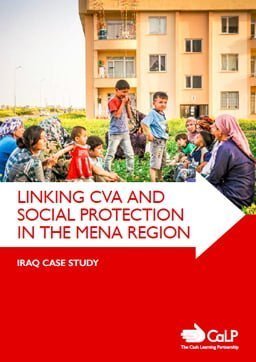
Linking CVA and Social Protection in the MENA Region – Iraq Case Study
Report
Building linkages between humanitarian cash and voucher assistance (CVA) and social protection (SP) has become an increasingly prominent topic over the past five years and the Middle East and North Africa (MENA) region has been at the centre of this evolution. The objective of this resource set (the crib sheet and 3, soon to be 6, regional case studies) is to ensure that the CALP Network...

Linking CVA and Social Protection in the MENA Region – Lebanon Case Study
Report
Building linkages between humanitarian cash and voucher assistance (CVA) and social protection (SP) has become an increasingly prominent topic over the past five years and the Middle East and North Africa (MENA) region has been at the centre of this evolution. The objective of this resource set (the crib sheet and 3, soon to be 6, regional case studies) is to ensure that the CALP Network...
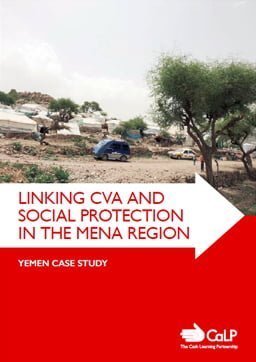
Linking CVA and Social Protection in the MENA Region – Yemen Case Study
Case Study
Building linkages between humanitarian cash and voucher assistance (CVA) and social protection (SP) has become an increasingly prominent topic over the past five years and the Middle East and North Africa (MENA) region has been at the centre of this evolution. The objective of this resource set (the crib sheet and 3, soon to be 6, regional case studies) is to ensure that the CALP Network...

Linking Cash and Voucher Assistance (CVA) and Social Protection – Occupied Palestinian Territories (OPT): Country Summary
Report
This country summary is part of a larger resource set, providing practitioners with examples of different approaches to linking CVA
and social protection.
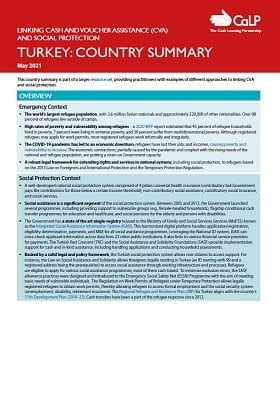
Linking Cash and Voucher Assistance (CVA) and Social Protection – Turkey: Country Summary
Report
This country summary is part of a larger resource set, providing practitioners with examples of different approaches to linking CVA
and social protection.
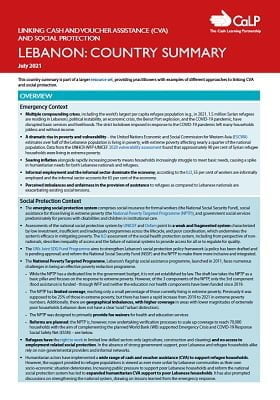
Linking Cash and Voucher Assistance (CVA) and Social Protection – Lebanon: Country Summary
Report
This country summary is part of a larger resource set, providing practitioners with examples of different approaches to linking CVA
and social protection.
Líder temática
Últimos recursos
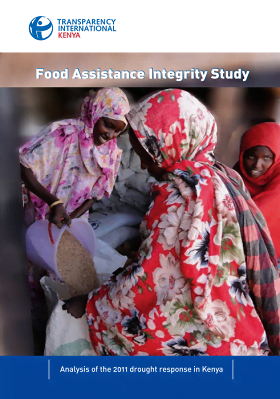
Transparency International Kenya: Food Assistance Integrity Study
Report
The Food Assistance Integrity Study highlights various food approaches in Kenya with the aim of enhancing integrity, accountability, efficiency and cost effectiveness in the implementation of food assistance programs. The study uncovered evidence of critical flaws in the food assistance chain and...
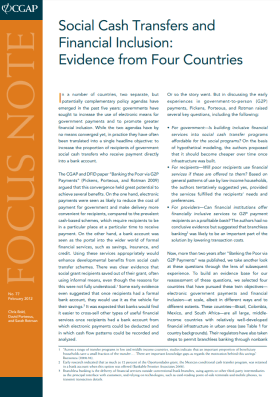
Social Cash Transfers and Financial Inclusion: Evidence from four countries
Report
This focus note from CGAP looks at social cash transfers and how this is being used to improve financial inclusion. To do so they look at examples from Brazil, Colombia, Mexico and South Africa. The focus note compares the various payment approaches, how these interlink with the respective government...
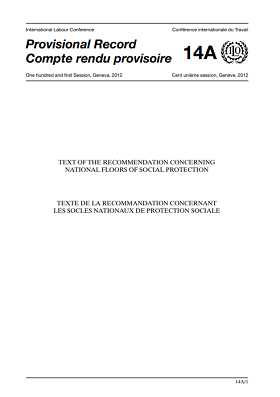
Text of the Recommendation Concerning National Floors of Social Protection
Report
Further to the International Labour conference 101st session, the International Labour Organization adopted a new international work. Recommendation concerning the implementation of quick national social protection floors and the progressive extension of social safety for all. Social protection floors are...
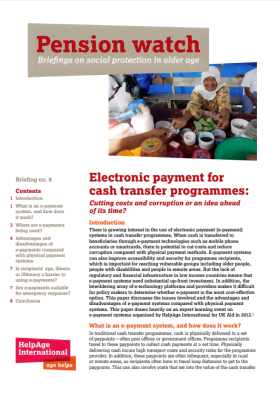
Pension Watch Briefing #8: Electronic payment for cash transfer programmes
Policy paper
There is growing interest in the use of electronic payment (e-payment) systems in cash transfer programmes. When cash is transferred to beneficiaries through e-payment technologies such as mobile phone accounts or smartcards, there is potential to cut costs and reduce corruption compared with physical...

Good Practice Review 11: Cash transfer programming in emergencies
Guidelines and Tools
The GPR is intended for humanitarian practitioners who plan and implement emergency responses – both those who are already familiar with cash-based interventions and those who are not. It synthesises cash transfer guidelines, highlights lessons from evaluations and adds practical examples drawn from...
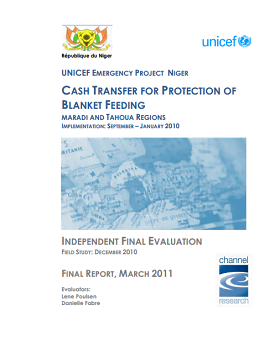
Cash Transfer for Protection of Blanket Feeding: Maradi and Tahoua regions
Report
The Project ‘Cash Transfer to Protect Blanket Feeding’ in Niger was launched by UNICEF in June 2010. The Project was a direct response to the growing evidence that blanket supplementary feeding rations distributed to children of 6 to 23 months of age in food insecure communities were consumed by older...
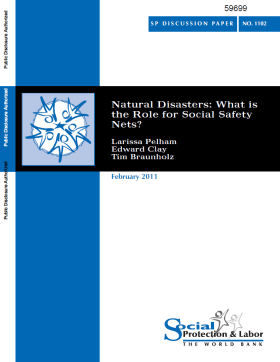
Natural Disasters: What is the role for social safety nets?
Policy paper
This paper makes the case for why safety nets are an important tool for managing the risk of natural hazards. The use of safety nets is advocated both ex ante, to prevent and mitigate the impact of natural disaster and ex post, to cope with the impacts of natural shocks. Firstly, the paper explores the...
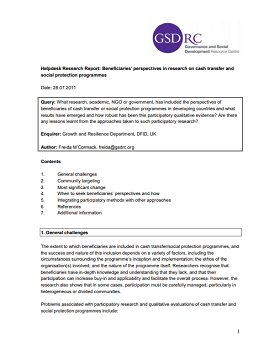
Helpdesk Research Report: Beneficiaries’ perspectives in research on cash transfer and social protection programmes
Report
Query: What research, academic, NGO or government, has included the perspectives of beneficiaries of cash transfer or social protection programmes in developing countries and what results have emerged and how robust has been this participatory qualitative evidence? Are there any lessons learnt from the...

Protection
Guidelines and Tools
Protection mainstreaming is a practical, efficient and effective means to maximise the protective impact of aid programming. Through incorporating protection principles into aid design and delivery, humanitarian actors can:
Promote the human rights of affected populations
Enhance affected populations’...
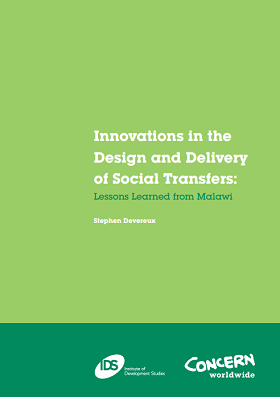
Innovations in the design and delivery of social transfers: Lessons learned from Malawi
Case Study
In 2005/6 and 2006/7, Concern Worldwide in Malawi designed and delivered two emergency social transfer programmes that were evaluated as innovative and effective, and have advanced thinking on best practice and what is feasible, both in emergency contexts and in the delivery of predictable (nonemergency)...
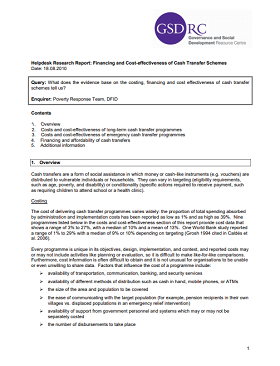
Helpdesk Research Report: Financing and Cost-effectiveness of Cash Transfer Schemes
Report
Query: What does the evidence base on the costing, financing and cost effectiveness of cash transfer schemes tell us? Cash transfers are a form of social assistance in which money or cash-like instruments (e.g. vouchers) are distributed to vulnerable individuals or households. They can vary in targeting...
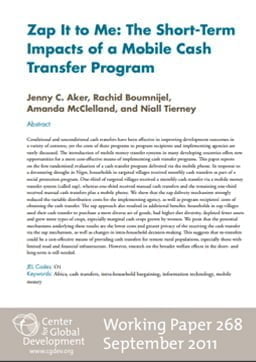
Zap It to Me: The Short-Term Impacts of a Mobile Cash Transfer Program
Report
Conditional and unconditional cash transfers have been effective in improving development outcomes in a variety of contexts, yet the costs of these programs to program recipients and implementing agencies are rarely discussed. The introduction of mobile money transfer systems in many developing...
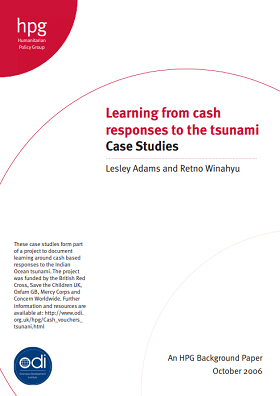
Learning from Cash Responses to the Tsunami: Case Studies
Case Study
These case studies form part of a project to document learning around cash based responses to the Indian Ocean tsunami. The project was funded by the British Red Cross, Save the Children UK, Oxfam GB, Mercy Corps and Concern Worldwide.

Cash-Based Safety Nets for Livelihood Support in Northeastern Somalia: A Feasibility Study for Save the Children UK and Horn Relief
Case Study
This study looks at the need for and feasibility of cash-based safety net programming within the operational areas of Save the Children UK and Horn Relief in Northeastern Somalia. The success of recent emergency cash transfer programs in Somalia permit the question of whether cash-based programs are...
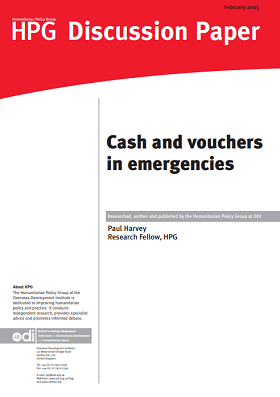
Cash and Vouchers in Emergencies
Report
This HPG discussion paper examines all aspects of using cash and vouchers to assist people in emergency situations. It provides a background to the literature and theory around cash and vouchers, looks at the current picture through selected examples and examines the decision making process on the...
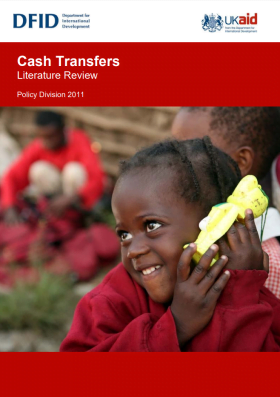
DFID Cash Transfers Literature Review
Report
This paper provides a synthesis of current global evidence on the impact of cash transfers in developing countries, and of what works in different contexts, or for different development objectives. Cash transfers are direct, regular and predictable non-contributory cash payments that help poor and...
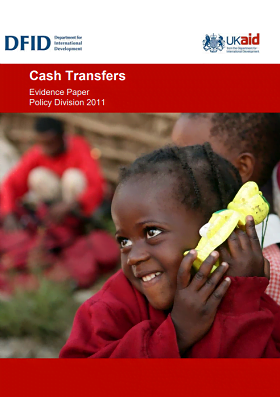
Cash transfers: Evidence paper
Report
This DFID evidence paper provides a synthesis of current global evidence on the impact of cash transfers in developing countries in achieving a range of social and economic policy objectives. It examines design and implementation choices for tailoring programmes to particular objectives, notably social...

Cash transfer programming in emergencies: The Cash Learning Partnership’s 5th Global Learning Event
Report
The CALP Network’s 5th Global Learning Event was organised in partnership with the International Federation of Red Cross and Red Crescent Societies (IFRC). The learning event took place in Nairobi, Kenya, and focused on three topics of emerging importance not only to cash transfer programming, but to...

Richer but Resented: What do cash transfers do to social relations and does it matter?
Report
This paper looks at how social protection cash transfers are evaluated primarily in terms of poverty reduction or human capital, with their impact on social relations being under-examined. The authors examine case studies from Kenya, Malawi and Zimbabwe, and argue that the impact of cash transfers on...

Korogocho Cash Transfer Initiative: Supporting ‘Transformative Social Protection’ in the Kenyan Urban Slums
Case Study
This case study looks at Concern Worldwide’s work with the Kenyan government to introduce the concept of transformative social protection (which acknowledges that vulnerability is not only related to income, and seeks to complement cash transfers with components addressing further vulnerabilities) to...

